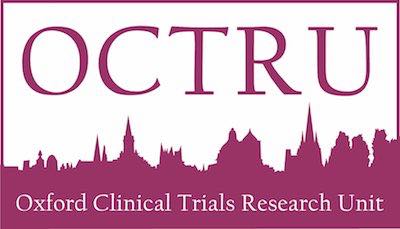It is important to us you know as much as possible about our research and what we are working to achieve to help patients with Dupuytren's disease particularly at an early stage of the condition.
The RIDD trial is testing whether anti-TNF therapy can slow or stop the progression of Dupuytren’s disease. We want to test anti-TNF therapy because key scientific findings from the lab suggest TNF is pivotal to the development of Dupuytren’s.
TNF – Tumor Necrosis Factor
TNF is a protein that signals between cells, and its main job is to initiate and sustain an inflammatory response. The production of TNF is usually well controlled, but several inflammatory diseases – including rheumatoid arthritis and inflammatory bowel disease – are the result of the body not regulating TNF properly. Anti-TNF therapy blocks TNF and reduces inflammation, and anti-TNF drugs have been licensed to treat these diseases.
The RIDD trial is using an anti-TNF drug called adalimumab (also known as Humira).
If you’d like to read more about the development of anti-TNF therapy there’s an interesting article published by Arthritis Research UK here.
We always aim to publish our data in publically accessible journals – at the end of this section we have attached links to our most relevant articles.
If you have questions about the science please email us.
1. The cells in a Dupuytren’s nodule – and the substances produced
We took fresh nodule samples and determined what types of cells were in the nodule. We found that approximately 90% of the cells in a nodule were myofibroblasts, and approximately another 7% were a type of immune cell called macrophages.
- Myofibroblasts are cells which normally repair damaged tissue after injury. They secrete collagen and other “scaffolding” proteins, and they produce a protein– also expressed in muscle cells – called smooth muscle actin which causes the cells to contract. In normal healing the collagen scaffolding bridges a wound, and the contraction pulls the edges of the wound together. However, in Dupuytren’s the collagen develops into fibrous cords between tendons in the finger and the palm of the hand. The smooth muscle actin then makes the myofibroblasts contract, pulling on the cords and curling the finger irreversibly towards the palm.
- Macrophages are immune cells which help protect the body by detecting and “eating” anything which does not appear to be a healthy cell - for example, bacteria, viruses, damaged or dead cells. When macrophages find something “wrong” they produce TNF to attract other macrophages and to encourage them to join the fight!
We also measured the levels of proteins found with the fresh cells, and then we kept the samples in culture to see how this changed with time. The macrophages didn’t survive in culture, and the proportions of the substances produced changed. This is important because cell culture is widely used in science to enable cells to be studied over many generations – and yet the results may be not be transferrable to what is really happening in the body. We were then interested in finding out what effect the physiological (realistic) levels of substances would have on cells…
Modelling the disease
Quite often in medical research, scientists try to recreate a disease in an animal so that drugs can be tested more quickly and easily. For some diseases this can be a successful approach, however there is no animal model for Dupuytren’s disease.
The only way we can test the cells in Dupuytren’s disease is by collecting real, human tissue from patients who have had surgery to treat a contracture.
We want to say a big thank you to our tissue donors!
We are very grateful to the many patients who have donated their Dupuytren’s tissue to research. Without these tissue donations we would have little or no understanding of the cellular changes which are causing Dupuytren’s disease - and this clinical trial would not have been developed.
Even more exciting is that the cellular changes happening in Dupuytren’s disease may also be happening in other diseases of localised fibrosis. Our research team are investigating this now by comparing results with endometriosis samples in the lab. We hope the extensive research we have already done with Dupuytren’s may lead us to potential treatments for several other diseases.
2. Where do the myofibroblasts come from?
Dupuytren’s nodules are full of myofibroblasts, and they produce the cords and contractions which result in the loss of hand function – but where do these cells come from? It was already known that myofibroblasts are formed from other cells in the body which are triggered to change, and that in Dupuytren’s these are likely to come from fibroblast cells in the skin tissue overlying the nodule.
We took tissue samples from a) the palm of people with Dupuytren’s, b) the palm of people without Dupuytren’s, and c) elsewhere in the hand of people with Dupuytren’s. We then added different amounts of TNF and found that:
- TNF at the concentration naturally found in a Dupuytren’s nodule was the most likely to trigger a fibroblast to start behaving as a myofibroblast.
- The TNF caused cells to contract ONLY in samples which had come from the palm of people with Dupuytren’s.
This shows that it’s not a general response of any cell to TNF, but that specifically the nodule area in Dupuytren’s disease is primed to form these contracting cells in response to TNF.
3. These contractions were then reduced when we used anti-TNF drugs to block the action of the TNF.
The anti-TNF reduced the signals the cells use to produce smooth muscle actin (for contraction) and collagen (for scaffolding). The pictures here show microscope images of how the scaffolding disassembled in response to anti-TNF – the purple/blue is a cell nucleus and the red indicates smooth muscle actin. In the top picture there’s lots of smooth muscle actin and it shows how the cell is stretching out along the contracting filaments. In the bottom picture these filaments have lost their structure and the cell is no longer forming the scaffolding that would pull together.
Picture taken from Verjee et al, 2013.
These results suggest anti-TNF therapy may help stop the development of Dupuytren’s disease and this is what the RIDD trial aims to test.
If you'd like to read the original research paper it is available online:
Verjee et al. Unraveling the signaling pathways promoting fibrosis in Dupuytren’s disease reveals TNF as a therapeutic target. PNAS 2013.
Other papers from our group include:






